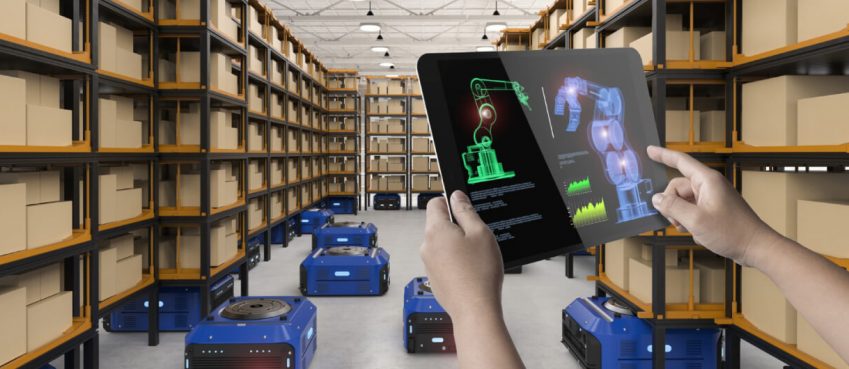
If you are engaged in freight work, you will know the value of time. More time allows you to respond more flexibly to the inevitable exceptions that occur when moving products. More time can also allow you to take a step back and learn how to improve your transportation network instead of focusing on daily freight operations.
Several kinds of transportation management systems are currently on the digital market, and many companies customize them for unique industries.
What is a transportation management system?
Transportation management systems are the supply chain management programs that enable shippers to view the cost of logistics and planning processes. However, the system is different in terms of scalability and functionality.
The primary function is still logistics management, including transportation and transportation management. But modern systems can do more than management: they implement technologies that support tracking.
The overall goal of using TMS is to improve delivery efficiency, reduce costs, provide real-time transparency in the supply chain, and provide customer satisfaction. Shippers and carriers are the primary users of TMS software manufacturers, third-party providers, wholesalers, and e-commerce organizations. Distributors and logistics service providers are also significant users of TMS software.
Also read: 9 Best Cybersecurity Companies in the World
TMS Benefits
Let’s look at all the benefits of transportation management systems that the company can expect after implementation.
Reduce freight costs
The transportation management systems can help companies quickly determine shipments and arrange routes to ensure that they are transported at the lowest cost and the best service. If there is an opportunity to stop, the goods that do not fall into these categories will be sent in the best way at the best price to meet the service requirements.
Establish a strong distributor relationship
When working with distributors, it is important to establish a solid and trusting relationship with them over the long term. After all, they make sure that your product arrives at the right place at the right time, and if there is a delivery problem, the first thing they should do is tell you, not your customer.
The more you interact with them, the more information you will get about their transportation process. The more you know, the more information you can share with customers to improve their experience. With your brand.
Also read: How To Download YouTube Videos Without Watermark? 15+ Apps and Websites Mentioned (Online & Free)
Best Network Alignment
The preferred sender status first checks whether your network is appropriately aligned. This includes building efficient routes, helping operators maximize their resources, and enabling operators to offer more competitive prices.
Planning
Optimizing the delivery process is one of the main goals of transportation management software. Your TMS provides you with all the data and analysis you need to use the transportation process and deliver goods quickly at the lowest possible cost.
You are optimizing semi-trailer transportation by using transportation management systems to make the best use of your resources. Your fleet can even reduce fuel and labor costs by planning multi-level travel and eliminating empty kilometers between delivery points.
Route Analysis
Although planning is the core function of TMS, routing is not its strong point. To program and solve route problems, many companies use route optimization software.
Unlike TMS, this software has all possible algorithms to calculate the best route. You will most likely need to use a combination of these tools-routing tools to extract large amounts of data from the TMS so that you can analyze the performance of routing.
Also read: How To Calculate Your Body Temperature With An iPhone Using Smart Thermometer
Get meaningful analysis
Since all the company’s logistics information flows through the transportation management systems, this data can be converted into reports and dashboards for action.
For example, using TMS, companies can view the transportation cost per unit of product down to the SKU level to make strategic changes that affect their bottom line.
You can also view items such as supplier dashboards and real-time tracking data. These reports and dashboards can help logistics professionals track key indicators that affect their company’s bottom line.
Top 10 News
-
01
Top 10 Deep Learning Multimodal Models & Their Uses
Tuesday August 12, 2025
-
02
10 Google AI Mode Facts That Every SEOs Should Know (And Wha...
Friday July 4, 2025
-
03
Top 10 visionOS 26 Features & Announcement (With Video)
Thursday June 12, 2025
-
04
Top 10 Veo 3 AI Video Generators in 2025 (Compared & Te...
Tuesday June 10, 2025
-
05
Top 10 AI GPUs That Can Increase Work Productivity By 30% (W...
Wednesday May 28, 2025
-
06
[10 BEST] AI Influencer Generator Apps Trending Right Now
Monday March 17, 2025
-
07
The 10 Best Companies Providing Electric Fencing For Busines...
Tuesday March 11, 2025
-
08
Top 10 Social Security Fairness Act Benefits In 2025
Wednesday March 5, 2025
-
09
Top 10 AI Infrastructure Companies In The World
Tuesday February 11, 2025
-
10
What Are Top 10 Blood Thinners To Minimize Heart Disease?
Wednesday January 22, 2025







